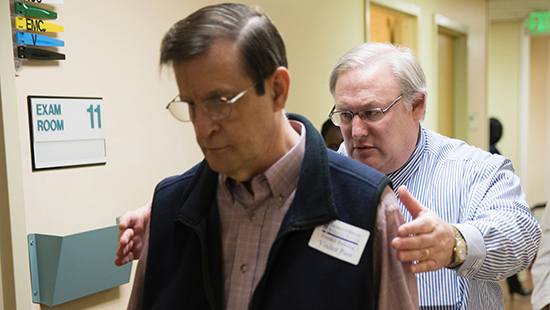Parkinson's Disease Diagnosis

Parkinson’s disease is a diagnosis that is made by a physician talking to a patient and his/her family (getting a history of the problems) and by a physical examination.
While a primary care physician or other physician may first suspect the diagnosis of Parkinson’s disease based on symptoms such as a tremor, it is important that the diagnosis is confirmed by a brain doctor (a neurologist).
In some cases, it is important for people to see a Parkinson’s disease specialist (a neurologist with extra training in movement disorders like Parkinson’s disease) to figure out or confirm the correct diagnosis and/or to get expert advice on how to manage certain symptoms.
It is important to see a neurologist because symptoms of Parkinson’s disease can vary from person to person and because some people will have “parkinsonism” (a problem with symptoms similar to Parkinson’s disease) rather than Parkinson’s disease itself.
People with “parkinsonism” may have extra symptoms, respond less well to medicine, and get worse faster over time, so it is important to know if someone has “Parkinson’s disease” itself or one of the “parkinsonisms.” Sometimes it can be difficult to know the answer at the first visit and specialists will have to follow someone over months or years to make the correct diagnosis.
Testing for Parkinson's Disease
There are no blood tests or brain scans that can make the diagnosis of Parkinson’s disease. Right now, the diagnosis of Parkinson’s disease is still made based on the history (what someone tells the doctor about their symptoms) and the examination.
In some cases, a doctor may order medical imaging such as a CT scan or an MRI to make sure nothing else is happening, but these scans will not show any changes relating to Parkinson’s disease.
In 2012, the FDA approved a special kind of brain scan called a DaT scan. In this scan, people receive an injection of a dye and then pictures show if there is a brain problem relating to the chemical dopamine. However, this scan was approved only to help figure out if someone with tremor (shaking) has a disease in the Parkinson family or if their tremor might be related to a different disease called “familial essential tremor.”
Most of the time, a neurologist – especially a movement disorders specialist – can know if someone has a disease in the Parkinson family or familial essential tremor without doing this scan. It is also important to know that this scan cannot help a doctor know if a person has Parkinson’s disease or one of the other parkinsonisms. Thus, this scan is only used in a few situations. It is not for everyone who might have Parkinson’s disease.
